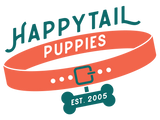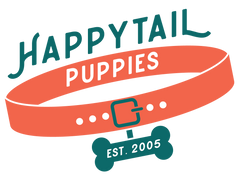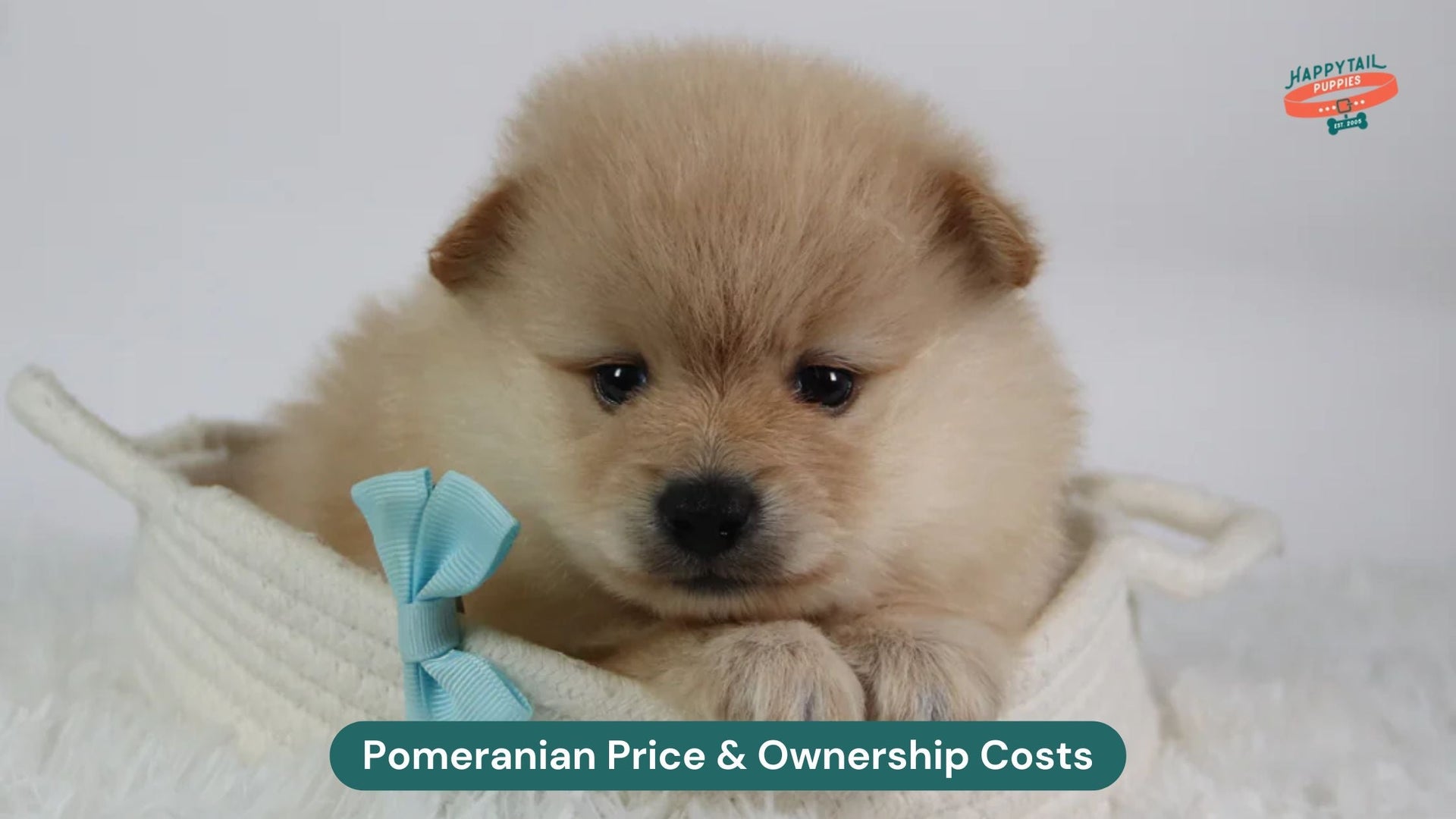Decoding the Pomeranian Dog Price and Lifetime Ownership Costs
Pomeranians are adorable, but what's the cost? Our guide details initial purchase prices, essential one-time setup fees, and recurring costs for lifelong care.
Pomeranians are one such breed that have recently gained a huge vibe due to their dynamic personas and fluffiest coats. These core traits turn them into one of the highly adorable breeds of their time. Their compact sizes and vibrant appearance lead prospective owners to consider the financial aspects of bringing one home.
The true cost of owning a Pomeranian varies considerably, as it relies on various factors such as the dog's pedigree, the breeder's reputation, and geographical location. Besides the buying costs, factors such as a proper grooming routine for managing their dense fur, including vet charges and other routine expenses, involve additional considerations.
Knowing the overview of the costs involved is important for those who plan to bring home this breed. Numerous prospective pet owners inquire about the initial and recurring costs of owning a Pomeranian. Today, in our comprehensive guide, we will take a sneak peek at various factors that primarily impact the Pomeranian dog price.
How Much Does A Pomeranian Cost?
Since the cost of Pomeranian ownership varies considerably based on numerous factors, it is variable. Almost identical to other prominent small dog breeds, such as the Miniature Cocker Spaniel, pups created from champion bloodlines or specialized breeders typically cost more. This makes alternatives, such as adopting one or purchasing from breeders, highly affordable. If you plan on buying one, you must factor in the initial costs, in addition to setting forth on a long-term commitment, to ensure the overall happiness and health of the dog.
A study conducted by the American Kennel Club (AKC) found that the average cost of a Pomeranian pup from a renowned breeder in the US typically ranges between $1,000 and $3,000. Furthermore, the additional expenses often include veterinary care, microchipping, vaccinations, and other essentials, which we will explain later. A thorough research into the breeder standards and practices ensures that the pet owners are making the best decision of their lifetime commitment.
Several other factors that impact the Pomeranian price include the color of their coats, size and whether the pup comes pre-trained or socialized. The rare colors or the teacup sizes may cause the cost to increase. An overview of such aspects can help buyers anticipate the complete investment required to care for their pup throughout their lifetime.
Breakdown of One-Time Costs
The initial costs typically cover the majority of the expenditure involved with the first ownership of a Pomeranian. Knowledge of such upfront investments can help new owners allocate their budget effectively, ensuring that their pup starts life with adequate care and protection. Such one-time costs are key to laying a strong foundation for bringing home a healthy and happy Pomeranian.
Adoption Fees
The initial cost of owning a Pomeranian through adoption is one of the notable investments involved in owning a pup. Often similar to other small dog breeds, such as the Miniature Goldendoodle, the costs typically vary based on the location from which you are obtaining your dog. The renowned breeders, puppy farms and other rescue shelters list their pups in different price ranges. These costs typically depend on the quality of care, health guarantees involved, and the puppy's lineage.
Renowned breeders typically charge between $1,195 and $3,000 for their Poms. Such costs generally include the fundamentals of vaccinations, health inspections, and, at times, early socialization training. Pups from champion bloodlines or those with rare coat colors may prove expensive.
Vaccinations
Vaccinations play an integral part in keeping your pup healthier and preventing severe diseases. While purchasing or adopting a pup, the initial set of vaccinations is the prerequisite expense. Their costs generally vary based on geographic location and the distinct set of vaccines required. However, the fees typically range between $100-$200 for each pup.
Based on reports from the American Veterinary Medical Association (AVMA), approximately 90% of pups in the United States receive their primary vaccinations within the first 16 weeks of their life, highlighting the key importance of on-time immunization for their overall health.
The initial round of vaccinations includes the key vaccines for distemper, parvovirus, and adenovirus, as well as optional ones such as those for kennel cough, Bordetella, or Lyme disease. Staying up to date with current vaccinations is essential for your pup's optimal health, preventing preventable diseases while avoiding costly treatments in the future.
Microchipping
Microchipping is another single treatment procedure on a Pomeranian. This will improve the possibility of recovering them once your dog loses them. It costs approximately 30 to 60 dollars, and it is performed by inserting a tiny permanent chip slightly under the skin of the dog. The chip carries a unique identification number, which is associated with your contact information throughout the national pet database.
Even though the initial costs are the chip and insertion, some microchip services offer lifetime registration, or they charge a fee to update contact details. Microchipping is required to ensure the safety and well-being of your pup.
Other One-Time Expenses
Naturally, other one-time expenses are present. Budget considerations include purchasing a crate, bedding, bowls, a collar, a leash, and a few toys, as compared to the price of a Miniature Goldendoodle. One of the necessities is a crate; this gives your puppy a safe and secure area during house-training and a certain level of comfort. Bedding is also required, and this provides warmth, support to the joints and comfort. Bowls and leashes are also practical necessities that are durable in nature.
Another initial expense is buying grooming products, including a brush, nail clippers, and puppy-safe shampoo. Your young Pomeranian also needs a few high-quality toys that will encourage them to be mentally and physically active. This is to establish the mood of your dog in order to prevent destructive behavior. Even though the tools will not be utilized very often, they will be essential to creating a comfortable, nurturing environment at the very beginning of the work ,since these expenses are insured.
Understanding the Full Cost of Owning a Pomeranian
Aside from the purchase, owning a Pomeranian entails a lifetime of care and maintenance. For each of those years, the dog requires care, attention, and expenses associated with maintaining its health. This entails the costs related to the Pomeranian and its intended purpose.
Initial Purchase Cost
Your first cost might be the first purchase, but it's really just the beginning. The first-year cost of caring for small dogs, such as Pomeranians, amounts to around $2,674, which includes the costs of food, veterinary visits, preventive medications, and puppy supplies. Pomeranians and other small companion dogs tend to cost more than other small breeds. Paying puppy prices for small breeds may also be due to health certifications, vaccinations and early training.
Choosing a good breeder eliminates the chances of having to deal with the financial repercussions of poor genetics, health issues, or behavioral issues. The economic cost stream of poor genetics must be weighed against the peace of mind that a healthy puppy brings.
Veterinary and Health Costs
Routine veterinary care is a vital component of responsible pet ownership. Teacup Pomeranian Health requires attention to detail due to their small size and delicate constitution. Regular vaccinations, spaying or neutering, dental cleanings, flea and tick prevention, and annual wellness exams are necessary. Unexpected health issues or emergencies can significantly increase costs, particularly if the dog develops hereditary conditions common to the breed.
Budgeting for routine care helps prevent serious health problems and ensures early detection of illnesses. Owners who invest in preventive care often face lower long-term costs. Providing quality healthcare is crucial to maintaining a Pomeranian's health and well-being throughout its life.
Nutrition and Feeding
A Pomeranian needs proper nutrition to stay healthy. Nourishing your Pomeranian and high-quality small breed food fosters the growth of healthy energy levels, coats, and digestion. A healthy coat and healthy weight will be the outcome of premium brands, as well as some supplements. Specialty diets can be beneficial for dogs with medical conditions or food sensitivities.
There is not as much money required to feed small-breed dogs as large-breed dogs, but even a small amount of food with high-quality ingredients will be costly. Nevertheless, such savings will probably be lost in the shadow of the high medical costs that may arise in the future due to neglecting proper health in the early years.
Grooming and Maintenance
The Pomeranian is a breed of dog with a thick, double coat, which requires frequent grooming and care. The American Kennel Club (AKC) recommends that small-breed Pomeranians have their hair trimmed by a professional every four to six weeks to prevent matting and maintain a healthy coat. The coat is to be groomed on a daily basis, although it also requires professional grooming to remove and eliminate the formation of tangles and mats in the dog. The coat, similar to the dog, has to be cleaned regularly with baths, nail clipping, ear cleaning and dental cleaning.
Grooming keeps the skin clean, makes a dog comfortable and improves its appearance. In addition, grooming is not only cosmetic but also essential for the long-term health of a dog. By overlooking it, it can lead to pain, infection and costly visits to the vet.
Training and Socialization
The appropriate upbringing of a Pomeranian would not be possible without training and socialization. Similarly to the Cocker Spaniel price, it includes training factors that are specific to small breeds, puppy classes, training in obedience, and socialization, which may prevent problems in behavior and promote a healthy relationship between the dog and the owner. Behavior-based training has the potential to save money in the future. The result of a calmer and more manageable dog is a pleasant reward.
Socialization has positive mental stimulation, builds confidence, and increases flexibility. Some of the ways of enhancing the emotional connection between a dog and its owner are through puppy playdates, visiting the dog park, and interactive games. Cheerful and assured friends are an outcome of the right training.
Insurance and Emergency Costs
Pet insurance can cover emergency medical care for pets, such as treatment of chronic conditions. According to the American Pet Products Association (APPA), in the US, almost one-fourth of dog owners have used insurance to pay unforeseen veterinary care costs. The policies will depend on the age of the pet, which will also determine the breed and health coverage. Unpredictable emergency medical costs also cover accidents, illnesses and even surgeries. It is a good practice to have both an insurance policy and an emergency savings account.
Insurance reduces the number of moments filled with emotional suffering from high-cost medical treatments and makes it possible to prioritize the needs of the Pomeranian over the owner's budget. Anticipating the inevitable will help the owner to have the Pomeranian taken care of promptly and in the best way possible.
Miscellaneous Expenses
Expenses such as toys, beds, carriers, seasonal clothing, and other accessories that are used occasionally also accumulate. Some toys stimulate the mind of a dog, and some beds and crates allow a dog to rest. Seasonal items, such as a sweater or raincoat, may also be useful depending on the weather.
Even these costs, which can often be neglected, will provide a dog with comfort and contribute to its quality of life and psychological well-being. This will be achieved through good planning, ensuring that comfort, including all aspects, is provided, and other care aspects are not compromised.
Estimating Lifetime Ownership Cost
Vet care, grooming, feeding, training, insuring and all the accessories required should also be considered in responsible financial planning. The time expenses of a Pomeranian may run into tens of thousands of dollars. Because Pomeranians have a lifespan of 12 to 16 years, the initial purchase cost, together with other yearly expenses, is added to miscellaneous costs to bring about a total life financial outlook.
Lifetime planning will ensure that the dog receives all the care it requires. This also makes the dog live a healthy life, and the owner has a healthy financial planning environment. This enables new dog owners to make arrangements and budget for any anticipated expenses.
Conclusion
Owning a Pomeranian is a source of joy and companionship, and it can be rather entertaining, but the financial costs are also substantial. The Pomeranian price is only known, and the cost incurred so far will help owners develop a care plan for the pet throughout its life.
A dog can be kept happy and healthy by ensuring it receives regular health check-ups, is fed enough food, is groomed, trained, and taken care of in the event of any emergencies. With proper preparation, owners are able to enjoy all the benefits of having a playful and loving Pomeranian.


